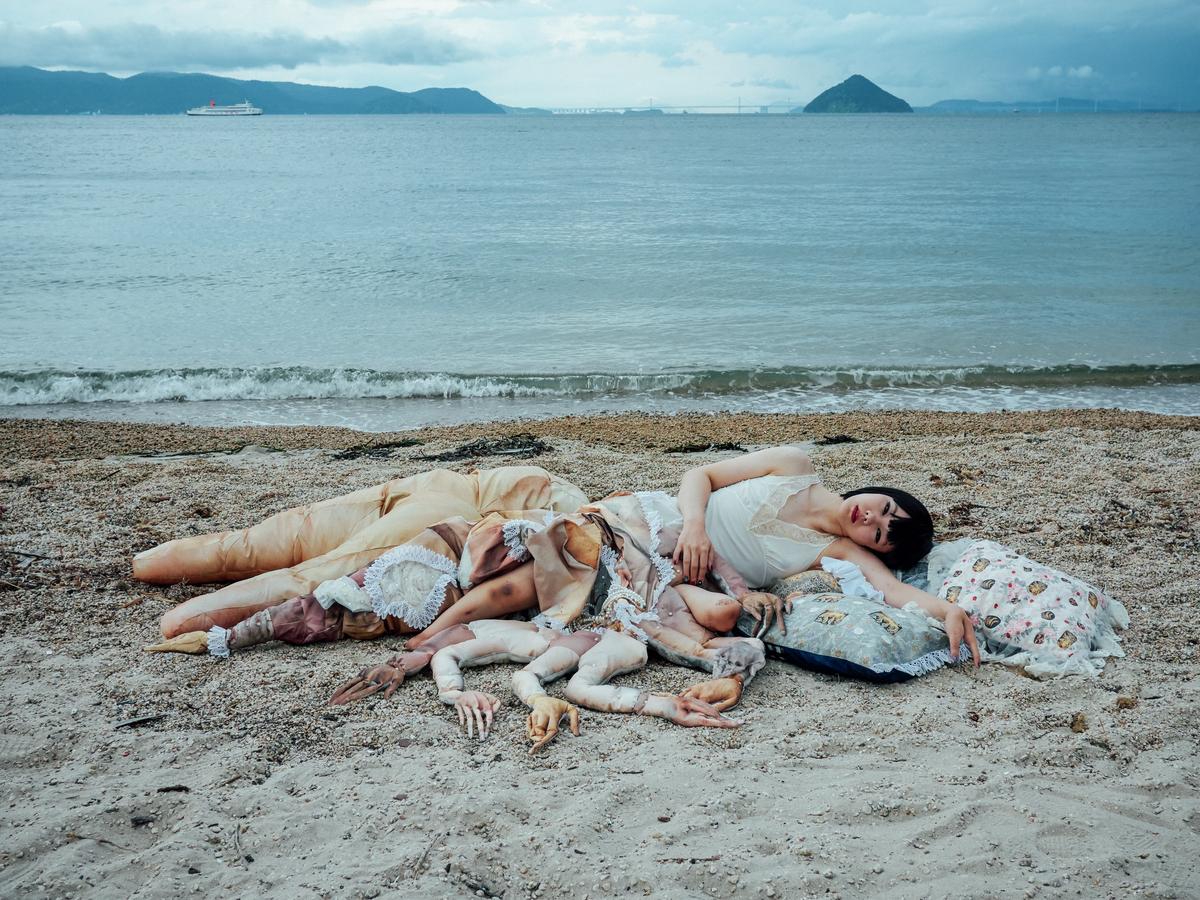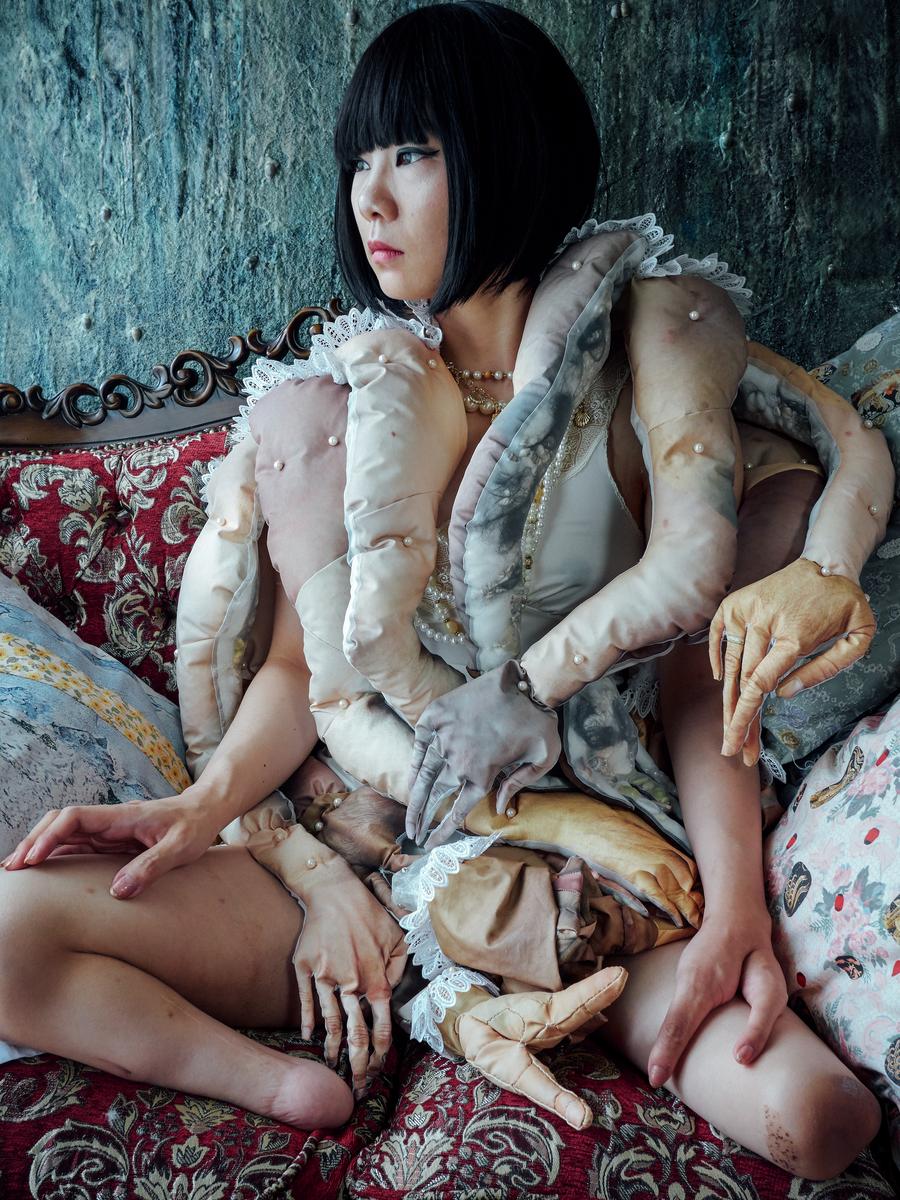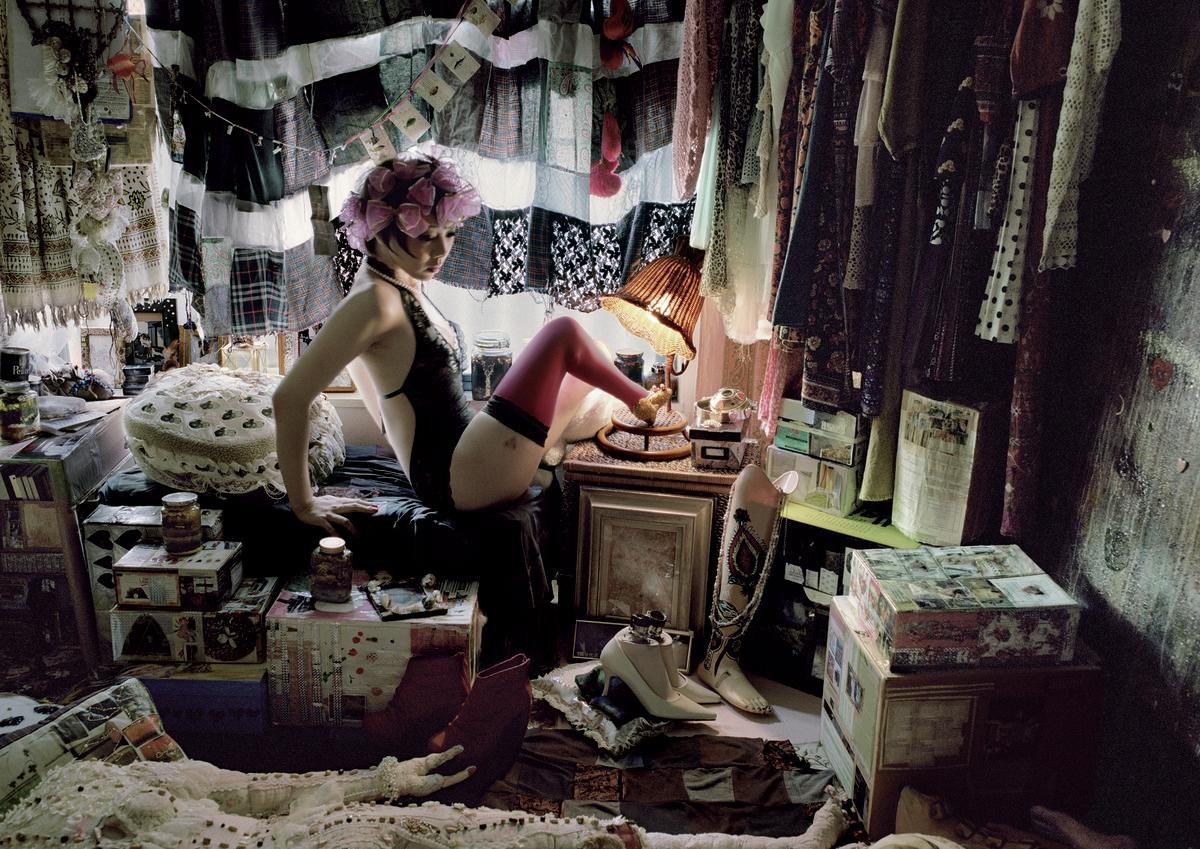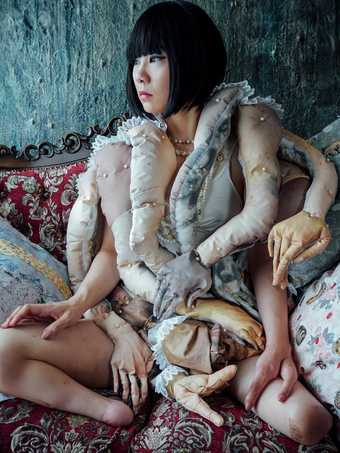9 rooms in Performer and Participant
Mari Katayama uses her body and the materials she finds around her to make self-portraits, embroidered objects and living sculptures
Playing with conventions of the self-portrait, Katayama creates hand-sewn sculptures and photographs that prompt conversations and challenge misconceptions about our bodies. Born with the developmental condition congenital tibial hemimelia, Katayama chose to have her legs amputated at the age of nine. Her wearable sculptures, which also feature in her images, often include limbs, hands and embellished hearts. She has said, ‘The hearts I make are always “broken” hearts. That’s because a broken heart, which has been bumped, tumbled and battered, shines like a mirror ball, and reflects light from multiple sides, good and bad, much more than a fresh and smooth heart without a scratch.’
This display shows a range of work created in the last 20 years. Katayama’s work reflects her belief that contemporary art is based on your own experiences. She uses everyday materials that she finds around her – including her own body, clothes and newspaper clippings – to make her sculptures and images. Commenting on her process, Katayama says: ‘I make objects with a needle and thread because I believe they are the most powerful mediums. Compared to plaster, wood or metal, they are light, easy to handle and accessible to everyone.’
With travel support from Pola Art Foundation.
Art in this room




